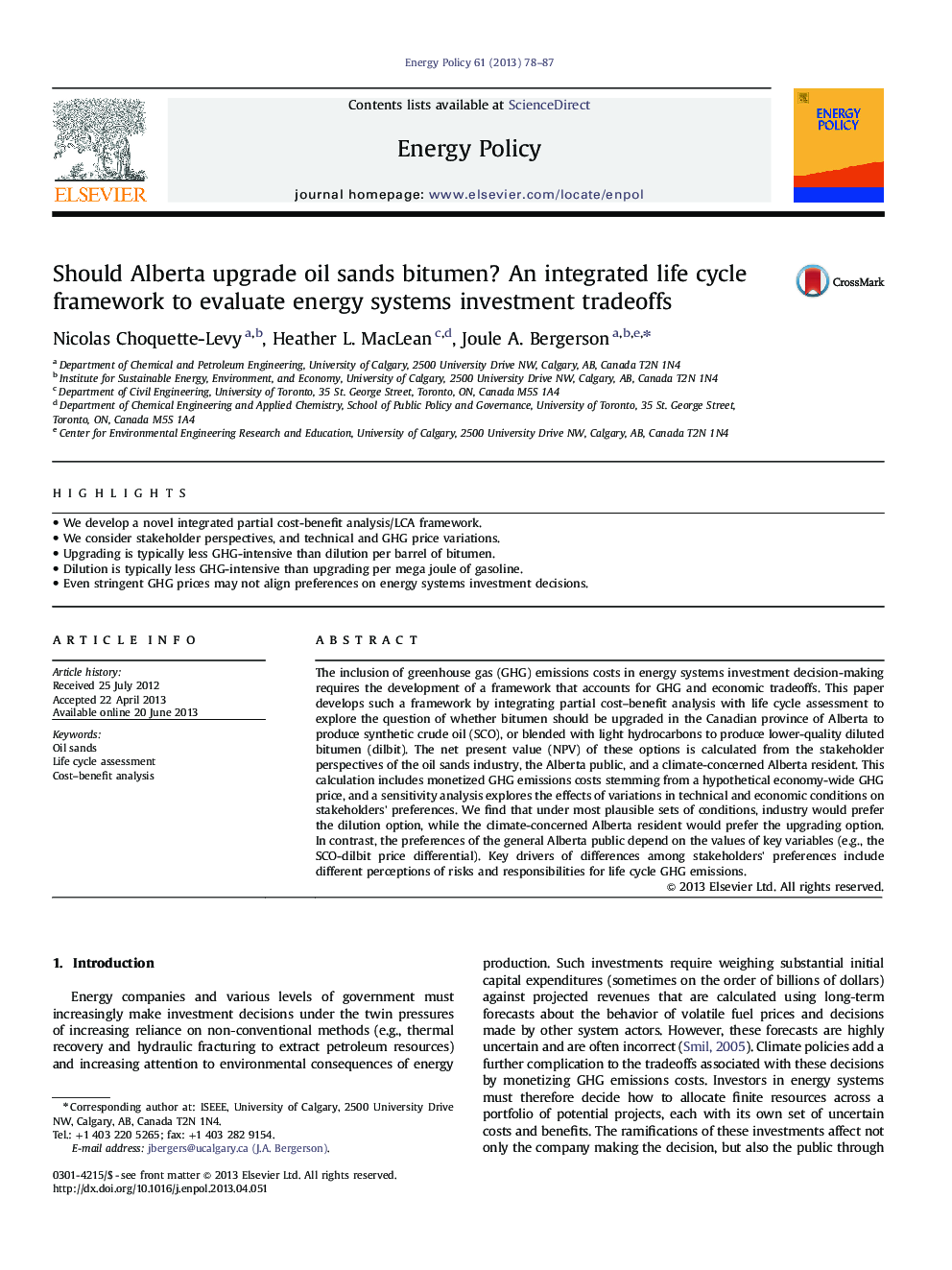| Article ID | Journal | Published Year | Pages | File Type |
|---|---|---|---|---|
| 7403941 | Energy Policy | 2013 | 10 Pages |
Abstract
The inclusion of greenhouse gas (GHG) emissions costs in energy systems investment decision-making requires the development of a framework that accounts for GHG and economic tradeoffs. This paper develops such a framework by integrating partial cost-benefit analysis with life cycle assessment to explore the question of whether bitumen should be upgraded in the Canadian province of Alberta to produce synthetic crude oil (SCO), or blended with light hydrocarbons to produce lower-quality diluted bitumen (dilbit). The net present value (NPV) of these options is calculated from the stakeholder perspectives of the oil sands industry, the Alberta public, and a climate-concerned Alberta resident. This calculation includes monetized GHG emissions costs stemming from a hypothetical economy-wide GHG price, and a sensitivity analysis explores the effects of variations in technical and economic conditions on stakeholders' preferences. We find that under most plausible sets of conditions, industry would prefer the dilution option, while the climate-concerned Alberta resident would prefer the upgrading option. In contrast, the preferences of the general Alberta public depend on the values of key variables (e.g., the SCO-dilbit price differential). Key drivers of differences among stakeholders' preferences include different perceptions of risks and responsibilities for life cycle GHG emissions.
Related Topics
Physical Sciences and Engineering
Energy
Energy Engineering and Power Technology
Authors
Nicolas Choquette-Levy, Heather L. MacLean, Joule A. Bergerson,
